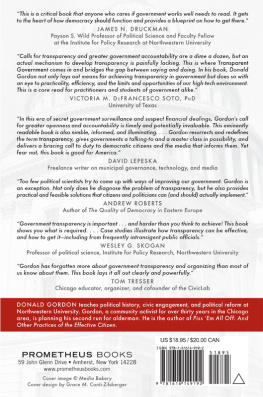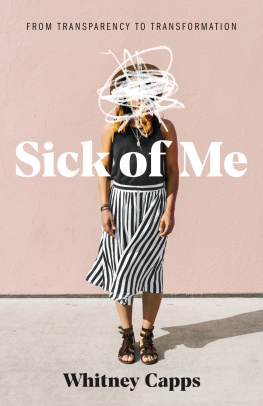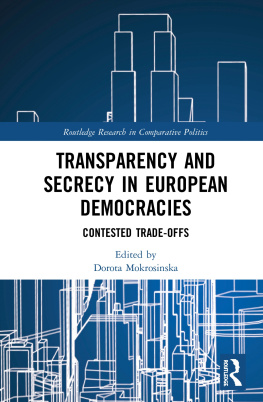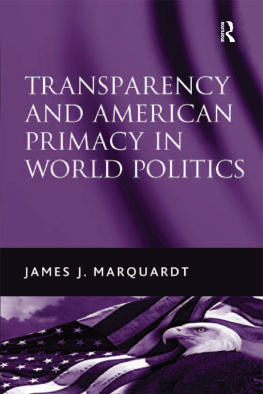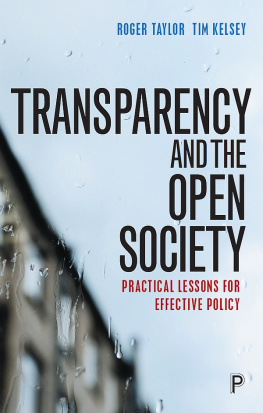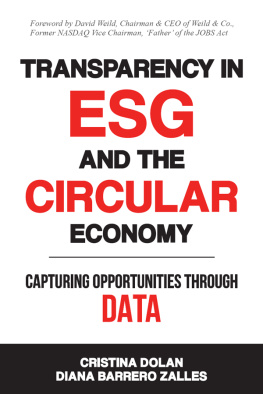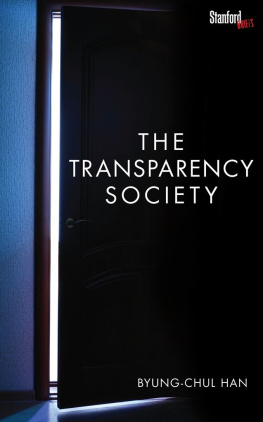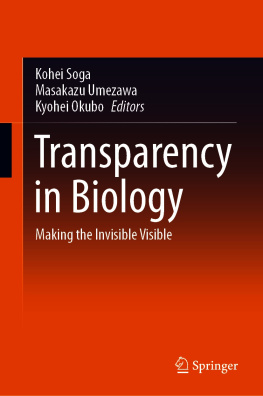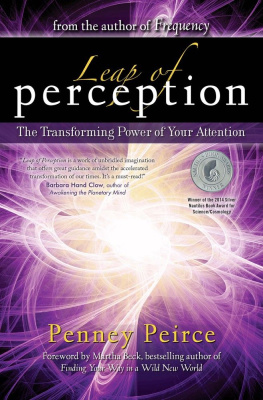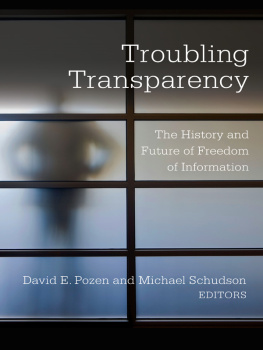
Transparency and Journalism
This book offers a comprehensive, authoritative, and accessible introduction to journalistic transparency.
Pulling from historical and theoretical perspectives, Transparency and Journalism explains the concept of transparency and its place in journalistic practice, offering a critical assessment of what transparency can and cannot offer to journalism. The author also reviews the key theoretical claims underlying transparency and how they have been researched in different parts of the world, ultimately proposing a communication model that can be used to study the concept of transparency across journalism research. Other topics discussed include the use of algorithmic forms of transparency, the limitations of the transparency myth, and suggestions for future avenues for research.
Transparency and Journalism is an important resource for students and scholars in the field of journalism and media studies, as well as for journalists and researchers interested in delving into an ever-relevant topic for the field.
Michael Karlsson is professor in media and communication at Karlstad University, Sweden. His research interest lies primarily within digital journalism and his work has been widely published in journals such as Digital Journalism, Journalism Studies, Journalism, Journalism and Mass Communication Quarterly, Journal of Computer-Mediated Communication, and Communication Theory.
Disruptions: Studies in Digital Journalism
Series editor: Bob Franklin
Disruptions refers to the radical changes provoked by the affordances of digital technologies that occur at a pace and on a scale that disrupts settled understandings and traditional ways of creating value, interacting and communicating both socially and professionally. The consequences for digital journalism involve far reaching changes to business models, professional practices, roles, ethics, products and even challenges to the accepted definitions and understandings of journalism. For Digital Journalism Studies, the field of academic inquiry which explores and examines digital journalism, disruption results in paradigmatic and tectonic shifts in scholarly concerns. It prompts reconsideration of research methods, theoretical analyses and responses (oppositional and consensual) to such changes, which have been described as being akin to a moment of mind-blowing uncertainty.
Routledges new book series, Disruptions: Studies in Digital Journalism, seeks to capture, examine and analyse these moments of exciting and explosive professional and scholarly innovation which characterize developments in the day-to-day practice of journalism in an age of digital media, and which are articulated in the newly emerging academic discipline of Digital Journalism Studies.
Journalism Education for the Digital Age
Promises, Perils, and Possibilities
Brian Creech
Transparency and Journalism
A Critical Appraisal of a Disruptive Norm
Michael Karlsson
Reappraising Local and Community News in the UK
Media, Practice and Policy
David Harte and Rachel Matthews
For more information about this series, please visit: https://www.routledge.com/Routledge-Frontiers-of-Political-Economy/book-series/SE0345
First published 2022
by Routledge
2 Park Square, Milton Park, Abingdon, Oxon OX14 4RN
and by Routledge
605 Third Avenue, New York, NY 10158
Routledge is an imprint of the Taylor & Francis Group, an informa business
2022 Michael Karlsson
The right of Michael Karlsson to be identified as author of this work has been asserted by him in accordance with sections 77 and 78 of the Copyright, Designs and Patents Act 1988.
All rights reserved. No part of this book may be reprinted or reproduced or utilised in any form or by any electronic, mechanical, or other means, now known or hereafter invented, including photocopying and recording, or in any information storage or retrieval system, without permission in writing from the publishers.
Trademark notice: Product or corporate names may be trademarks or registered trademarks, and are used only for identification and explanation without intent to infringe.
British Library Cataloguing-in-Publication Data
A catalogue record for this book is available from the British Library
Library of Congress Cataloging-in-Publication Data
Names: Karlsson, Michael, 1960- author.
Title: Transparency and journalism : a critical appraisal of a disruptive norm / Michael Karlsson.
Description: London ; New York : Routledge, 2022. |
Series: Disruptions : studies in digital journalism | Includes
bibliographical references and index.
Identifiers: LCCN 2021015673 | ISBN 9780367356163 (hardback) |
ISBN 9781032101057 (paperback) | ISBN 9780429340642 (ebook)
Subjects: LCSH: Journalistic ethics. | Journalism--Philosophy. |
Transparency (Philosophy)
Classification: LCC PN4756 .K34 2022 | DDC 174.907--dc23
LC record available at https://lccn.loc.gov/2021015673
ISBN: 978-0-367-35616-3 (hbk)
ISBN: 978-1-032-10105-7 (pbk)
ISBN: 978-0-429-34064-2 (ebk)
DOI: 10.4324/9780429340642
To my parents Berit and Bo-Gsta
I have spent almost 20 years, first as a PhD student and later a researcher, trying to understand the transition journalism is going through and the role that transparency has played in it. By the early 2000s transparency was a concept that interested me and transparencys role as a new and tangible norm in journalism formed a significant part of my dissertation that I defended in 2006. Some of those ideas were later translated for an international audience and eventually published in journal articles. When I started out, transparency (and digital journalism as a whole) was an obscure topic in the rather marginalized research field of journalism studies. Twenty years later the academic field of journalism studies has several devoted and highly ranked journals reporting its concerns, and transparency has been adopted by major professional organizations and, more broadly, is seen as a key tool to repair and restore failing trust in democratic institutions.
However, my own initial enthusiasm for what can be accomplished with transparency has been curbed as the empirical evidence has trickled in. This book is very much about highlighting and trying to explain this transparency gap between promise and outcome. I understand that there might be some people reading this book who may be surprised by its straightforward tone. This is fine with me, but I want to make it clear that I am primarily picking a fight with myself. More specifically, a fight with my own previous understanding of this topic. Nevertheless, I remain convinced there is a role for transparency in journalism, although it might not be what was originally or currently imagined. I use the opportunity that a book provides to increase knowledge of the area, but also to highlight the complexity of the issue and to suggest that there are no easy or simple fixes. In short, this book is my attempt to summarize, critique, and push the transparency research forward. To get this book started and completed I am indebted to many people that are too numerous to list here. However, there are a few who must be mentioned.



